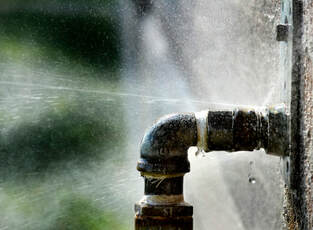How to Check If Your Home Has a Hidden Leak
How to Check If Your Home Has a Hidden Leak
Blog Article
On this page in the next paragraph you can get a good deal of excellent advice in relation to Finding hidden leaks.

The minute you discover a leak, calling your plumber for fixings is the very best service. However, some little water leaks may not be visible. Below are some hacks that assist if you can not detect it with your nude eyes.
Early detection of dripping water lines can reduce a potential calamity. Besides saving you cash, it will decrease the irritation and also irritation.
Check Water Intake
If you identify abrupt modifications, regardless of your consumption being the exact same, it suggests that you have leaks in your plumbing system. An unexpected spike in your expense shows a fast-moving leak.
On the other hand, a constant increase each month, despite having the very same practices, shows you have a slow-moving leak that's also slowly intensifying. Call a plumber to completely inspect your property, especially if you feel a warm area on your floor with piping underneath.
Check and Assess the Circumstance
House owners need to make it a behavior to examine under the sink counters and also also inside closets for any kind of bad odor or mold and mildew growth. These two red flags indicate a leakage so timely interest is required. Doing routine inspections, also bi-annually, can conserve you from a significant issue.
Analyze the Water Meter
Inspecting it is a surefire means that helps you uncover leaks. If it relocates, that indicates a fast-moving leak. This means you may have a slow-moving leak that might also be underground.
Asses Outside Lines
Do not forget to inspect your outdoor water lines as well. Examination spigots by connecting a yard hose pipe. Needs to water seep out of the connection, you have a loosened rubber gasket. Replace this as well as make certain all links are limited. If you've obtained a sprinkler system, it will certainly aid get it expertly took a look at and also maintained every year. One little leakage can waste tons of water as well as surge your water costs.
Do a Food Coloring Test
When it concerns water usage, 30% comes from bathrooms. Test to see if they are running properly. Drop specks of food shade in the container and wait 10 minutes. If the shade in some way infiltrates your dish throughout that time without flushing, there's a leakage between the tank and dish.
Check for discolorations as well as weakening as most pipelines and devices have a life span. If you believe leaking water lines in your plumbing system, do not wait for it to escalate.
The moment you locate a leak, calling your plumber for repair services is the ideal service. Some little water leaks may not be visible. Examining it is a surefire method that aids you discover leaks. One small leakage can waste heaps of water and also spike your water expense.
If you believe dripping water lines in your plumbing system, don't wait for it to escalate.
WARNING SIGNS OF WATER LEAKAGE BEHIND THE WALL
PERSISTENT MUSTY ODORS
As water slowly drips from a leaky pipe inside the wall, flooring and sheetrock stay damp and develop an odor similar to wet cardboard. It generates a musty smell that can help you find hidden leaks.
MOLD IN UNUSUAL AREAS
Mold usually grows in wet areas like kitchens, baths and laundry rooms. If you spot the stuff on walls or baseboards in other rooms of the house, it’s a good indicator of undetected water leaks.
STAINS THAT GROW
When mold thrives around a leaky pipe, it sometimes takes hold on the inside surface of the affected wall. A growing stain on otherwise clean sheetrock is often your sign of a hidden plumbing problem.
PEELING OR BUBBLING WALLPAPER / PAINT
This clue is easy to miss in rooms that don’t get much use. When you see wallpaper separating along seams or paint bubbling or flaking off the wall, blame sheetrock that stays wet because of an undetected leak.
BUCKLED CEILINGS AND STAINED FLOORS
If ceilings or floors in bathrooms, kitchens or laundry areas develop structural problems, don’t rule out constant damp inside the walls. Wet sheetrock can affect adjacent framing, flooring and ceilings.
https://www.servicemasterbyzaba.com/blog/how-to-detect-water-leakage-in-walls/

As a keen person who reads on Detecting hidden plumbing leaks, I assumed sharing that short article was a good thing. Liked our write up? Please share it. Let others find it. Thank you for your time. Please visit our site back soon.
Report this page